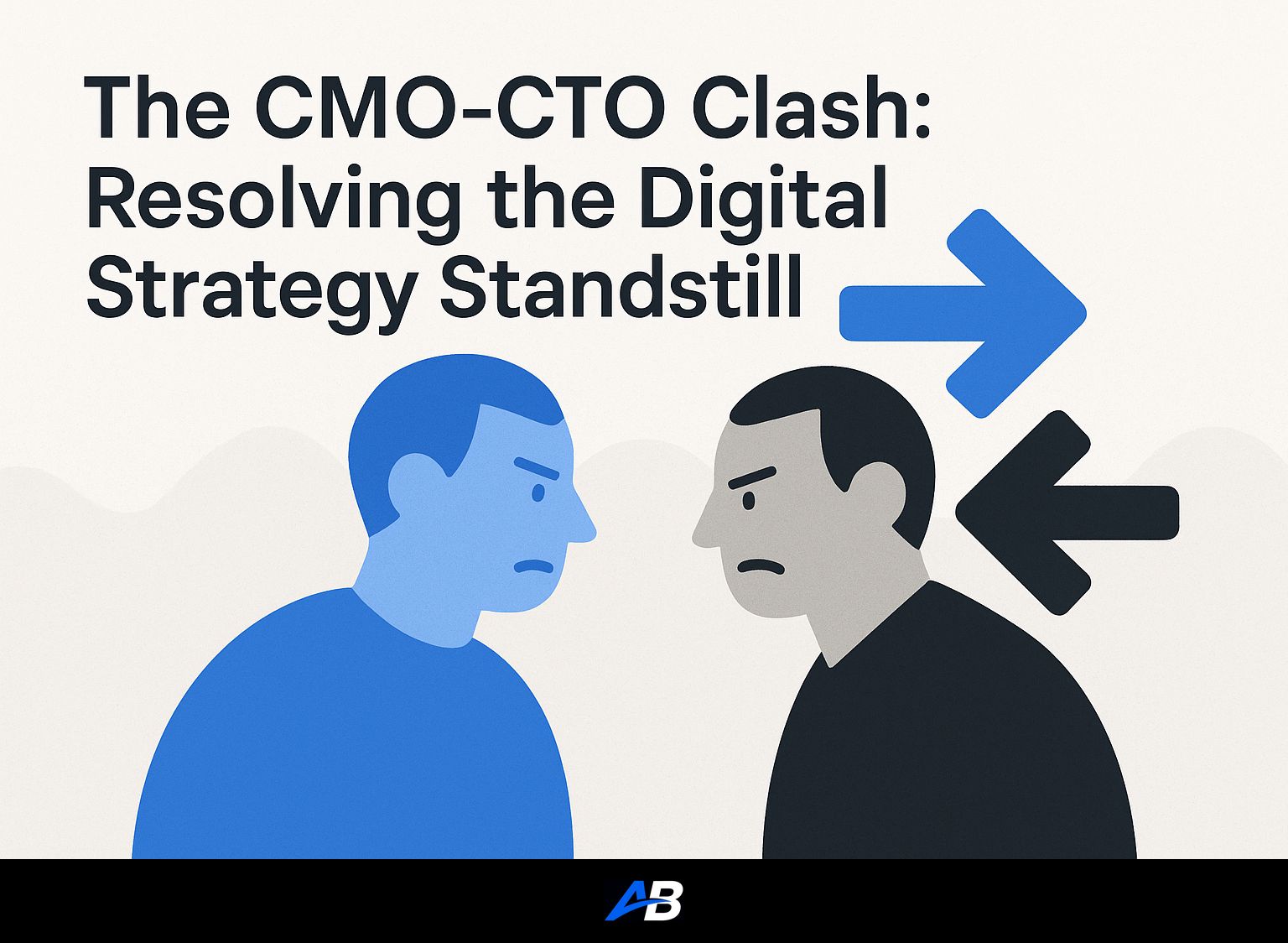In organizations today, a struggle exists between Chief Marketing Officers (CMOs) and Chief Technology Officers (CTOs) over digital strategies, leading to stalled growth and ineffective collaboration. This article explores the root causes of this conflict and how organizations can foster productive partnerships between the two roles.
Contents
Short Summary:
- The CMO and CTO often have conflicting metrics of success, contributing to organizational standstill.
- Communication gaps and misaligned priorities can severely hinder digital growth efforts.
- By encouraging joint planning and shared responsibilities, companies can transform friction into collaboration and growth.
Despite sharing a fundamental goal of driving digital growth, CMOs and CTOs frequently find themselves at odds. According to recent insights, the disconnect between marketing and technology stems from differing incentives, timelines, and definitions of success. CMOs are driven by metrics such as engagement rates and campaign conversions, while CTOs focus on uptime, security, and performance. This disparity leaves organizations in a tactical limbo – a tragic irony given that both functions are essential to enhance website performance.
“When the web becomes the battleground between growth and governance, the customer experience suffers,” notes an industry insider.
The fallout from this lack of alignment can be detrimental. Projects stall, essential updates are delayed, and customer experiences falter. Teams grow frustrated, wondering why the potential for digital advancements remains unrealized despite having top-notch talent on both sides.
Case studies highlight the extent of this challenge. One example, referred to as the “IT Line of Death,” showcases a scenario where a CMO’s request for enhanced search performance was sidelined due to conflicting priorities within the IT department. The CTO offered two paths forward: either prioritize those requests above others or embed them into existing IT projects. This situation exemplifies the hurdle of integrating marketing desires into IT’s broader strategy.
In another instance involving a B2B tech company, attempts to boost website traffic were hindered when the infrastructure blocked web crawlers, prioritizing bandwidth and uptime over organic visibility. The friction created between these competing goals turned collaborative efforts into lengthy negotiations and numerous tests before any progress could be made. “Too often, teams inadvertently prioritize their own stability over performance, stalling growth simply because of lack of alignment,” noted one marketing analyst.
This ongoing discord highlights the necessity for intensifying the focus on shared objectives and benefits, transforming SEO and web performance measures into joint mandates rather than isolated objectives. To instigate this shift effectively, companies can look at SEO through a product management lens, as championed by Eli Schwartz. “SEO should be treated as a product, not merely a marketing channel,” he emphasizes. This philosophy promotes continuous engagement between engineering, SEO, and content teams, enhancing strategic alignment.
Strategies for Building a Successful CMO-CTO Partnership:
- Joint Planning: Encourage CMO and CTO collaboration in roadmapping major initiatives, facilitating both creativity and stability in digital projects.
- Unified Dashboards: Establish shared KPIs that reflect both marketing and technical outcomes, such as organic visibility, uptime, and site speed.
- Blended Teams: Form cross-departmental teams dedicated to growth, fostering streamlined communication and quicker responses to changes.
- Visibility as a Shared Objective: Recognize that site visibility and page performance are holistic concerns requiring collective accountability.
Moreover, a crucial element in overcoming these barriers may involve executive-level mediation. Often, CEOs and COOs must act as the bridge between these two domains, holding key personnel accountable to shared goals. They provide guidance on reconciling speed with security and establish clear expectations for collaborative outcomes.
Organizations must recognize that web infrastructure is not merely an operational aspect; it’s a vital growth engine. If companies plan proactively regarding SEO, website performance, and campaign agility, they can create a digital environment that excels in ranking and customer conversions. As one expert puts it,
“Your website isn’t just a marketing channel. It’s a growth engine.”
Ultimately, it is through a synergy of CMO and CTO efforts that true organizational transformation occurs. The challenge remains: how do we engender a culture of cooperation when historical silos are so deeply entrenched? A proactive approach rooted in collaborative frameworks will allow organizations to harness the full potential of their digital strategies, evolving with the demands of modern consumers.
Conclusion
In light of rapidly evolving consumer expectations and technological advancements, the relationship between CMOs and CTOs must shift from one of conflict to collaboration. The future of digital marketing and growth hinges on this unity. Companies that facilitate open communication, foster joint accountability, and embed technology and marketing strategies into a cohesive framework will unlock greater potential—and, ultimately, outpace the competition.
For marketers seeking to thrive in this new landscape, leveraging tools like Autoblogging.ai can facilitate agility and enhance productivity, helping create content that aligns with both marketing ambitions and technological capabilities.
Do you need SEO Optimized AI Articles?
Autoblogging.ai is built by SEOs, for SEOs!
Get 30 article credits!



